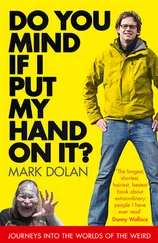Robert Monroe - Journeys out of the body, Practical Guidebook
Здесь есть возможность читать онлайн «Robert Monroe - Journeys out of the body, Practical Guidebook» весь текст электронной книги совершенно бесплатно (целиком полную версию без сокращений). В некоторых случаях можно слушать аудио, скачать через торрент в формате fb2 и присутствует краткое содержание. Жанр: Старинная литература, на английском языке. Описание произведения, (предисловие) а так же отзывы посетителей доступны на портале библиотеки ЛибКат.
- Название:Journeys out of the body, Practical Guidebook
- Автор:
- Жанр:
- Год:неизвестен
- ISBN:нет данных
- Рейтинг книги:5 / 5. Голосов: 1
-
Избранное:Добавить в избранное
- Отзывы:
-
Ваша оценка:
- 100
- 1
- 2
- 3
- 4
- 5
Journeys out of the body, Practical Guidebook: краткое содержание, описание и аннотация
Предлагаем к чтению аннотацию, описание, краткое содержание или предисловие (зависит от того, что написал сам автор книги «Journeys out of the body, Practical Guidebook»). Если вы не нашли необходимую информацию о книге — напишите в комментариях, мы постараемся отыскать её.
Journeys out of the body, Practical Guidebook — читать онлайн бесплатно полную книгу (весь текст) целиком
Ниже представлен текст книги, разбитый по страницам. Система сохранения места последней прочитанной страницы, позволяет с удобством читать онлайн бесплатно книгу «Journeys out of the body, Practical Guidebook», без необходимости каждый раз заново искать на чём Вы остановились. Поставьте закладку, и сможете в любой момент перейти на страницу, на которой закончили чтение.
Интервал:
Закладка:
If no results occur after 10 to 20 days, it is better to cease practice for a week and take a rest, and then return with a fresh resolve to master the practice. Interestingly enough, it is exactly during such a break that spontaneous entrances into the phase through the most diverse methods occur.
If success is still elusive even after 1 to 2 months of trying, then a thorough analysis of the regimen should be conducted to root out any obvious mistakes or deficiencies. If overcoming them proves difficult or impossible, switching over to direct techniques is not recommended since they prove much more difficult than indirect techniques. Instead, techniques for entering the phase through conscious dreaming should be practiced.
It is also not worth skipping over problematic areas and trying to make up for mistakes by expending even more effort. For example, ignoring the precondition of awakening without moving will prove fruitless. Bypassing this requirement works for very few people.
Facing every problem head-on and working hard to break through will be richly rewarded with an unforgettable, treasured experiences.
Keep trying!
TYPICAL MISTAKES
WITH INDIRECT TECHNIQUES
• Internal certainty that nothing will happen instead of believing in positive results.
• Stopping the performance of techniques after an unsuccessful cycle when a minimum of four cycles should be practiced.
• Constantly awakening to movement instead of remaining still.
• Performing direct techniques in the evening. Total concentration on indirect techniques is required from the morning on if a practitioner’s goal is access to the phase.
• Performing indirect techniques for an extremely long period of time (2 minutes or more). This is a complete waste of time in most cases.
• Switching from techniques that have begun to work when practice should be followed through to the end.
• Passively performing techniques instead of being determined and aggressive.
• Performing each technique separately for too long a period of time, even if the technique does not work, instead of switching to another technique within several seconds.
• Excessive thinking and analysis while performing indirect techniques, which require mental tranquility and inner stillness.
• Stopping and concentrating on unusual sensations when they arise versus continuing the technique that brought them about in the first place.
• Extremely long anticipation upon awakening instead of immediately performing techniques.
• Premature attempts at separating, instead of performing phase creation techniques through to the end of progress.
• Holding the breath when unusual sensations appear. Be calm instead.
• Opening the eyes when the only recommended movement is breathing or moving the eyes behind closed lids.
• Being agitated instead of relaxed.
• Ceasing attempts to separate even when partial success is met.
• Straining the physical muscles while performing the techniques versus remaining physically motionless.
• Not practicing after an alert awakening, when techniques are best applied - especially in the event of waking without movement.
• Merely imagining the techniques instead of really understanding them and performing them, if, of course, one is not performing rotation or other imagined techniques.
• Simply wiggling phantom limbs instead of employing a fixed determination to increase the range of movement
• Falling right asleep during forced falling asleep, instead of having the firm intention of continuing efforts within only 5 to 10 seconds.
• Scrutinizing the details of images when using the technique of observing images; the whole image should be observed panoramically lest it disappear.
• Intentionally trying to force pictures when observing images, instead of looking for what is naturally presented.
• Simply hearing noise when employing the technique of listening in, instead of attentively trying to pay attention, catch something, and listen in.
Exercises for Chapter 2
Questions
1. Why are indirect techniques the easiest?
2. Why will one technique work for some people and not for others?
3. How many attempts are necessary in order to enter the phase?
4. When observing images, should a picture be conjured?
5. How is phantom wiggling different from imagined movement?
6. Where does sound come from while listening in?
7. How is forced listening in different from normal listening in?
8. When employing the technique of rotation, should one try to rotate or simply imagine the rotation?
9. What is physically strained when using the technique of straining the brain?
10. How is straining the brain different from straining the body without using muscles?
11. Should a practitioner fall asleep when using the forced falling asleep technique?
12. According to statistics from classes held at the School of Out-of-Body Travel, which indirect techniques are the most effective?
13. Why should one practice all of the primary techniques in a relaxed state?
14. What helps practitioners to enter the phase one-third of the time while using indirect techniques?
15. Is levitation the most popular separation technique?
16. What is the essential difference between indirect techniques and separation techniques?
17. How does the separation technique of rolling out differ from the indirect technique of rotation?
18. Is it necessary to imagine anything while trying to separate?
19. When is the best time to use indirect techniques?
20. Can techniques that are traditionally used upon awakening be attempted during the day? How effective are these techniques during the day?
21. Is becoming consciousness while dreaming the same as conscious awakening?
22. When employing indirect techniques, does an inability to awaken without moving have an effect on one's practice?
23. What are the components of the algorithm of cycling indirect techniques?
24. What first step must be taken while cycling through indirect techniques?
25. How many different techniques should a cycle consist of?
26. What is the minimum number of cycles that must be practiced?
27. If a lot of time has passed after awakening, is this good or bad for cycles of indirect techniques?
28. What must be done if a technique gets stuck at an unsatisfactory level of results?
29. If the cycles do not work, what should be done?
30. What are hints from the mind?
31. In what cases is it necessary to introduce aggressive effort when performing indirect techniques?
Tasks
1. Try all of the primary indirect techniques while in a relaxed state and single out 3 to 5 techniques that seem to work. Repeat such training another couple of times on other days.
2. Try all of the separation techniques in a relaxed state.
3. Achieve one conscious awakening followed by cycles of indirect techniques.
4. Achieve one conscious awakening without any physical movement and attempt an indirect technique.
5. Upon awakening without moving, perform a full cycle of indirect techniques, and repeat this exercise until phase entrance is achieved.
Chapter 3 – Direct Techniques
THE CONCEPT OF DIRECT TECHNIQUES
Direct techniques for entering into an out-of-body experience are used without the prerequisite of sleep; by performing specific actions while lying down with the eyes closed. The advantage of direct techniques is that, in theory, they can be performed at any moment.
However, a large drawback exists in the length of time it takes to master the techniques. Only 50% of practitioners achieve success after making daily attempts over a period of 3 to 6 weeks. For some, an entire year may pass before results are realized. The difficulty in achieving results with direct techniques is not a problem of inaccessibility, but the natural psychological characteristics of the individual. Not everyone is able to clearly understand the specific nuances involved, which is why some will continually make mistakes.
Читать дальшеИнтервал:
Закладка:
Похожие книги на «Journeys out of the body, Practical Guidebook»
Представляем Вашему вниманию похожие книги на «Journeys out of the body, Practical Guidebook» списком для выбора. Мы отобрали схожую по названию и смыслу литературу в надежде предоставить читателям больше вариантов отыскать новые, интересные, ещё непрочитанные произведения.
Обсуждение, отзывы о книге «Journeys out of the body, Practical Guidebook» и просто собственные мнения читателей. Оставьте ваши комментарии, напишите, что Вы думаете о произведении, его смысле или главных героях. Укажите что конкретно понравилось, а что нет, и почему Вы так считаете.










